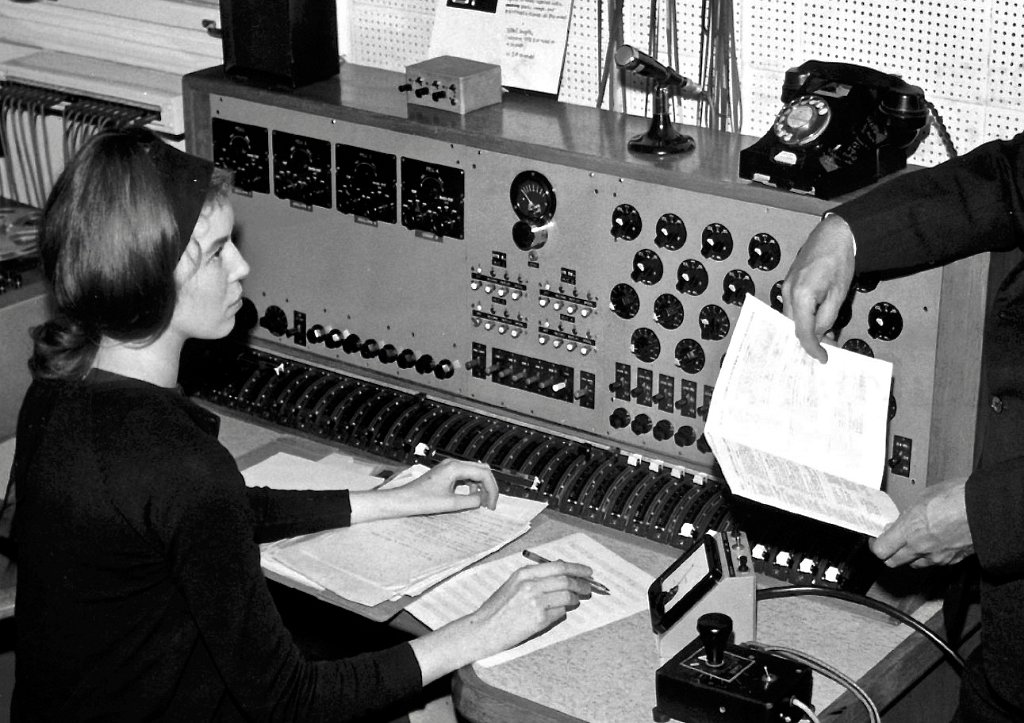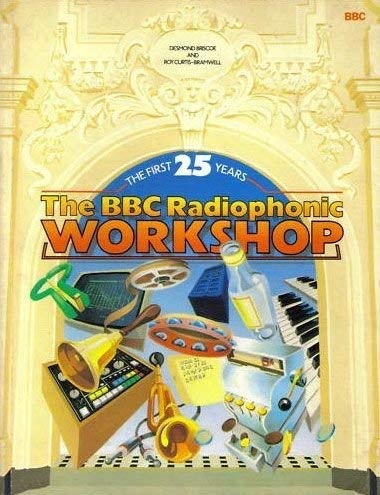

This bibliography contains books, articles, and informative videos about how electronic music was created prior to the year 2000.
The intended audience for this bibliography is people who are interested in how electronic music techniques changed throughout history, and people who are interested in replicating those techniques in their own music projects. I personally enjoy creating electronic music as a hobby, and have done a lot of research and watched a lot of documentaries over the years, and I know that there are many other passionate people like me who might be curious about all of these historical sources.
While I used journal articles from JSTOR, I also included a lot of books that should be accessible through either local or university libraries. I also included a few YouTube videos that anyone can watch, whether they have access to academic databases or not. I have organized the sources based on the years on which they are about, so a more recently-written source about the 1960s will appear next to an older one about the same era.
Hyperlinks are included to help make each source accessible and relatively easy to find, and citations as they appear in this bibliography's report are included as hover text.

Manning, P. (1987). Electronic & Computer Music. Oxford University Press.
A history of electronic music and technique, from early tone generators in the first half of the 20th century, to musique concréte and tape manipulation, early voltage-control synthesizers, and early computers that could be used to generate sound. Also included are in-depth explanations, diagrams, and flowcharts depicting how early synthesizers function.
This book is extremely in-depth. It is simultaneously technical and full of context about the people and groups involved in the development of electronic music techniques and the projects they worked on.

Holzer, D. (2010, February 1). A Brief History of Optical Synthesis. Tonewheels. Retrieved April 20, 2022, from http://www.umatic.nl/tonewheels_historical.html
Tonewheels was an experiment by Derek Holzer, a researcher at KTH Stockholm. The project is about "converting graphical imagery to sound," a concept that has been around throughout history. On his website, he includes a detailed summary of various theories and inventions from 1822 until the 1970s.
Lots of historical inventions are mentioned here, including the "Nivotone," an invention from 1931 which generated sound based on cut paper strips. Also mentioned is Lee De Forest's application of talking motion pictures in 1919.
Roads, C. (1996). Early Electronic Music Instruments: Time Line 1899-1950. Computer Music Journal, 20(3), 20-23. https://doi.org/10.2307/3680817
This journal article describes 93 electric and electronic instruments from 1899 to 1950 and their inventors.
This is only a list of instruments and inventors, but it is a useful showcase of how numerous and varied electronic instruments have been since electricity became widespread.
Palombini, C. (1993). Pierre Schaeffer, 1953: Towards an Experimental Music. Music & Letters, 74(4), 542-557. http://www.jstor.org/stable/737576
This article from Music & Letters is an examination of several people's opinions of early electronic music, mostly in the 1950s. Discussed are opinions on how to create it without sounding too "atonal or surreal," the possibility of accompanying electronic pieces with a traditional piano accompaniment, the variety of methods used by groups in different parts of the world, critiques of electronic "imitations" of traditional instruments, and many other things.
This source is very academic, and while it doesn't explain specific techniques in detail, it provides some useful context to how electronic and experimental music was viewed in the 1950s.

Briscoe, D., & Curtis-Bramwell, R. (1983). The BBC Radiophonic Workshop: The first 25 years: The inside story of providing sound and music for television and Radio 1958-1983. BBC Publications.
This book contains first-hand information about the BBC Radiophonic Workshop, a division of the BBC responsible for creating electronic sound effects and background music for radio and TV shows. Prior to the invention of the synthesizer, their techniques involved manipulating magnetic tape, changing the speed and cutting out individual notes with razor blades, and splicing them back together.
This book was co-written by Desmond Briscoe, the co-founder of the Radiophonic Workshop, and is a valuable primary source.

Niebur, L. (2010). Special Sound: The Creation and Legacy of the BBC Radiophonic Workshop. Oxford University Press.
Released in 2010, this book covers much of the same ground as The BBC Radiophonic Workshop: The First 25 Years. However, while that book was written in 1983, this book details the Workshop's history from its creation, through its two "golden ages", and eventual decline and closing in 1998.
While the earlier book doesn't contain any citations (as it is a primary source), this book contains sheet music transcriptions of various pieces, recollections from surviving Workshop members, and its own sizeable bibliography.

Philtre Films. (2009). The Delian Mode. Canada. Retrieved April 20, 2022, from https://thedelianmode.com/.
This documentary focuses on the female electronic music pioneer Delia Derbyshire, who worked at the BBC Radiophonic Workshop from 1962 to 1973. It describes her childhood in Coventry during the World War II blitz, and contains interviews with her peers, lots of historical footage, and recordings of her explaining her techniques.
Much of the information here will be very familiar to anyone who has read the two other books on the BBC Radiophonic Workshop, but this delves deeper into her personal life and inspirations. The footage of Derbyshire at work is fascinating as well. You can purchase a physical DVD of this documentary at the project's website, or you can watch it via YouTube.
Manning, P. (2003). The Influence of Recording Technologies on the Early Development of Electroacoustic Music. Leonardo Music Journal, 13, 5-10. http://www.jstor.org/stable/1513442
This article summarizes the history of electronic music in a few pages. It ranges from experiments in the 1920s that involved playing gramaphone records at the wrong speeds, to experiments in "drawn sound" via Daphne Oram's Oramics machine, to musique concréte and tape-based composition, to the synthesizer.
This is a good overview, and while it is short compared to other articles, it is comprehensive and cites many other sources of note.
Pinch, T., & Trocco, F. (1998). THE SOCIAL CONSTRUCTION OF THE EARLY ELECTRONIC MUSIC SYNTHESIZER. Icon, 4, 9-31. http://www.jstor.org/stable/23785956
This is a journal article that describes how the synthesizer was invented. It talks about Robert Moog's beginnings as a young hobbyist, to a manufacturer of amplifier and theremin kits, to the experiments with voltage controlled oscillators, and to what eventually became the standard basic model of all synthesizers. Wendy Carlos' 1969 album Switched on Bach is mentioned as bringing the synthesizer to the public eye, as is its use by popular bands like The Beatles. It ends with reflections on its use in the early 1970s.
This article has great descriptions of technical concepts like voltage control, and they are explained in easy to understand ways. This is important historical context about the invention of the synthesizer and its later use.

Paturzo, B. A. (1984). Making Music with Microprocessors. TAB Books.
This book is an interesting look into how people were making music with computers before home computers became widely adopted. Though released in 1985, the Apple II and IBM PC are not mentioned, and neither is the concept of computer games.
Instead, this book is about how to make music using other more rudimentary computers of the time, including the Synertek SYM-1 and the Rockwell AIM 65. It contains explanations of basic music theory and volume envelopes, how to build your own basic synthesizer to wire into a microprocessor, and printed-out Assembly Language code to type in.
This book would not be useful to anyone wanting to make music today, but it is an entertainingly obscure piece of electronics and computing history. It includes references to Popular Electronics magazine, and a SYM-1 enthusiast newsletter called SYM-PHYSIS, which has since been archived on 6502.org.
This is a technical manual on the famous Yamaha DX7 synthesizer. Contents include basic audio theory, how to operate the controls, how FM synthesis works in fine detail, and how to use the MIDI connections to control it from a computer or other synthesizers.
This is very technical, but is written in a conversational style, like a teacher guiding a student. It is easy to understand, and is packed with information.
It also contains three flexi-disk records, the contents of which has been archived on yates.ca.
A book aimed at musicians in 1986 who wanted to learn about the Musical Instrument Digital Interface standard, or MIDI. It has illustrations that demonstrate how to connect multiple instruments to each other and various other useful diagrams.
This book prides itself in the fact that it was written in non-technical language and with low amounts of jargon, and yet is still a very useful resource. It has important context for a lot of things that aren't easily findable on Google thanks to some concepts being slightly abstracted in modern Digital Audio Workstations, or DAWs. Musicians still use MIDI, but don't have to worry about using it to drive physical instruments or type in patch changes, system exclusive commands, and other control codes.

cTrix (2020, January 31). Amiga Samplers: Budget dance music in 1990 [Video]. YouTube. https://www.youtube.com/watch?v=i9MXYZh1jcs
This is a video detailing the use of music software for the Amiga 500 computer. The sample-based tracker-style program offers a technical, programming-like alternative to traditional sheet music or piano roll-style views.
This is a good look into the process of sampling on early home computers from 1988 to 1992, the pre-internet tracker community that sprung up through swap meets and magazines, and the people who still use these music tools today.

GST Channel (2021, April 12). An Interview With Neil Biggin [Video]. YouTube. https://www.youtube.com/watch?v=nCezEveCCnQ
This video is an interview with a composer named Neil Biggin, who composed for several video games in the 1990s. He talks about his early love of music, his involvement in the late 80s Sheffield music scene, joining Gremlin Interactive, the struggles of working with the tools common at the time, and many more fascinating stories and details.
This is a very long interview, but it is full of insight and is a great primary source.